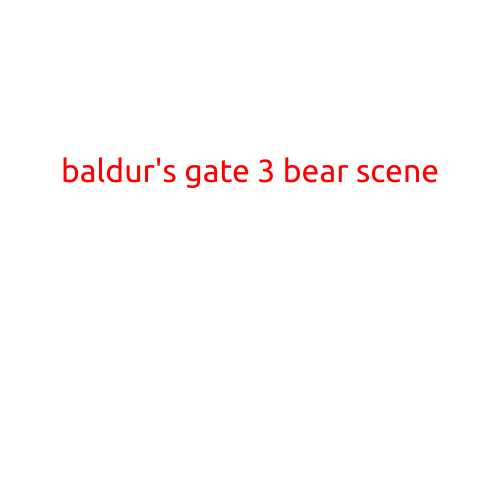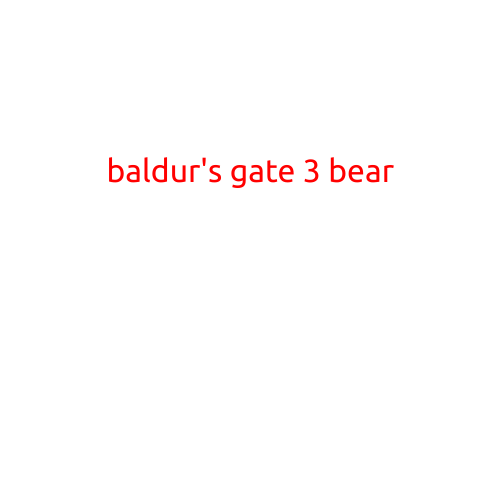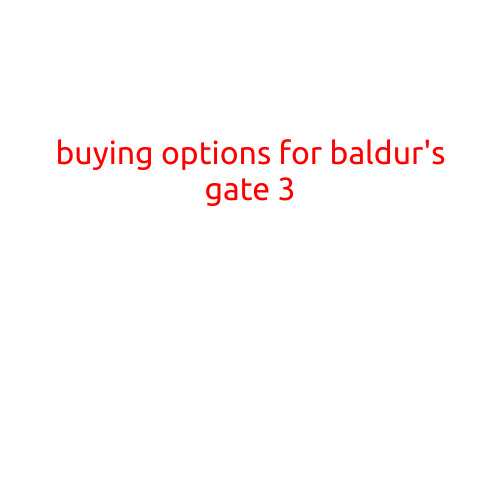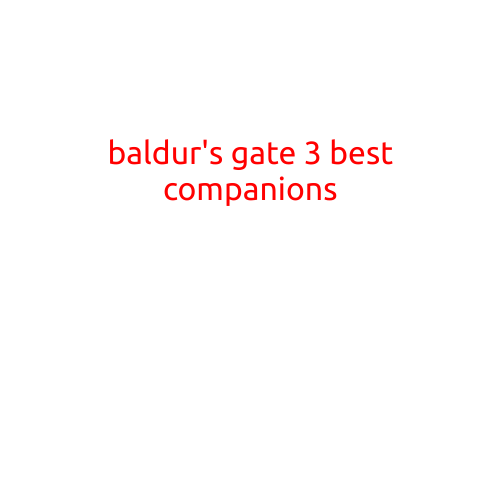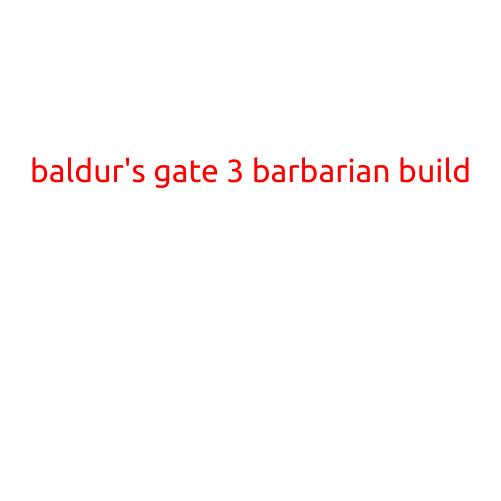
Baldur’s Gate 3 Builds: A Comprehensive Guide to Creating the Perfect Party
Baldur’s Gate 3 is the highly-anticipated sequel to the classic Baldur’s Gate series, and with its vast array of character classes, abilities, and spellcasting options, building the perfect party can be a daunting task. Fear not, dear adventurer, for we’ve compiled a comprehensive guide to help you create the ultimate Baldur’s Gate 3 build.
Understanding Character Classes
Before diving into builds, it’s essential to understand the different character classes available in Baldur’s Gate 3. The game features six primary classes: Fighter, Rogue, Cleric, Druid, Sorcerer, and Ranger. Each class has its unique abilities, strengths, and weaknesses, making it crucial to choose the right class for your playstyle.
Core Builds
Here are some core builds that can serve as a foundation for your party:
- The Tanky Fighter: Focus on melee combat with a high Defense stat and ability to absorb damage. Use classes like the Fighter or Paladin.
- The Sneaky Rogue: Emphasize stealth, agility, and misdirection with classes like the Rogue or Bard.
- The Healer Cleric: Specialize in restoring health and supporting allies with classes like the Cleric or Paladin.
- The Wildcard Druid: Combine melee and ranged combat with shape-shifting abilities, suitable for classes like the Druid or Ranger.
- The Spell-Slinging Sorcerer: Focus on casting spells, exploiting weaknesses, and dealing massive damage with classes like the Sorcerer or Warlock.
Sub-Classes and Multiclassing
Baldur’s Gate 3 allows for sub-classing, which provides additional abilities and nuances to your primary class. For example, the Fighter can sub-class into a Champion or a Battle Master. Multiclassing, on the other hand, enables you to combine two classes, such as a Fighter-Rogue or a Cleric-Sorcerer.
Ability Scores and Stat Distribution
Ability scores play a crucial role in determining character effectiveness. Aim for a balanced distribution of scores across:
- Strength (STR): Physical melee and throwing abilities
- Dexterity (DEX): Agility, speed, and reflexes
- Constitution (CON): Durability and ability to withstand damage
- Intelligence (INT): Spellcasting, magic, and insight
- Wisdom (WIS): Perception, intuition, and spellcasting
- Charisma (CHA): Persuasion, intimidation, and spellcasting
Key Spells and Abilities
Certain spells and abilities can greatly enhance your build. Some essential ones to consider:
- Divine Favor (Cleric): +10% damage to allies
- Healing Word (Cleric): Instantaneous healing
- Fireball (Sorcerer): Area-of-effect damage
- Passive Perception (Rogue): Enhanced awareness of enemies and hidden objects
- Evasion (Rogue): Avoid damage from certain attacks
Party Synergy
A well-rounded party is crucial for success. Consider the following:
- Complementary Roles: Ensure each character fills a different role, such as a tank, healer, and damage dealer.
- Skill Sets: Diversify your party’s skill sets to overcome obstacles, such as Lockpicking, Persuasion, and Arcana.
- Elemental Weaknesses: Balance your party’s elemental weaknesses to counter common enemies.
Conclusion
Building the perfect party in Baldur’s Gate 3 requires careful consideration of character classes, ability scores, spells, and abilities. By focusing on core builds, sub-classing, and multiclassing, you’ll be well on your way to creating a formidable party. Remember to prioritize party synergy, skill sets, and elemental weaknesses to overcome the challenges that lie ahead. Happy adventuring in Faerûn!
